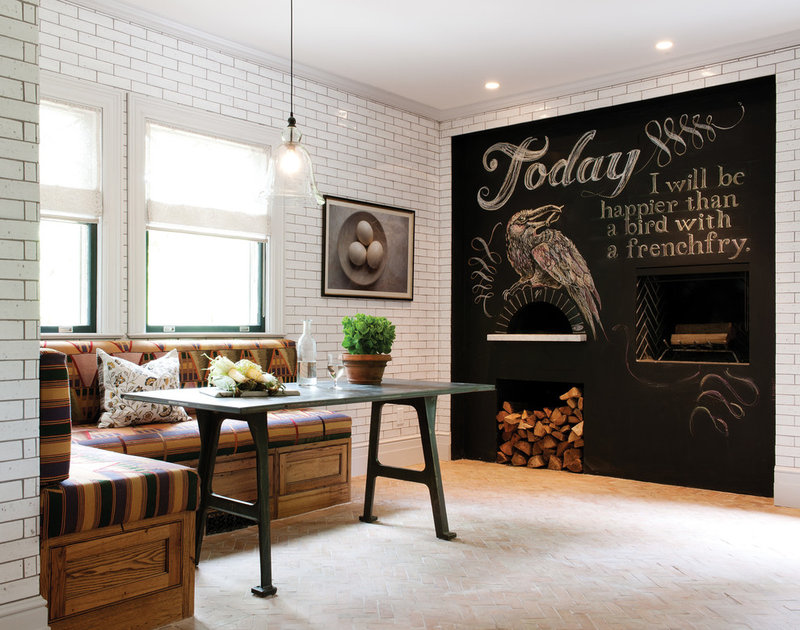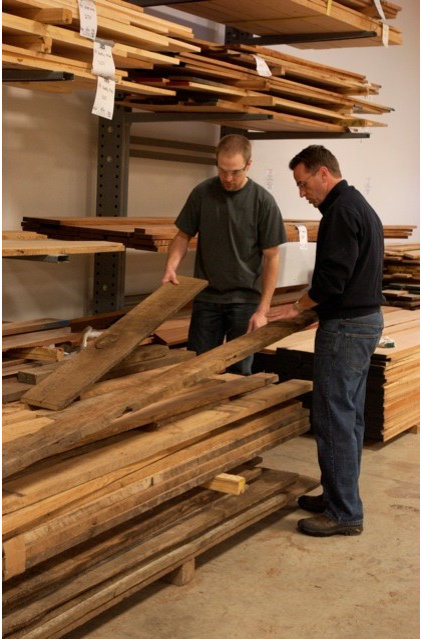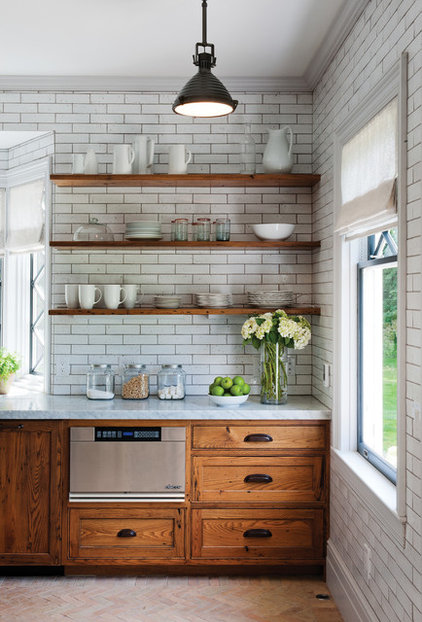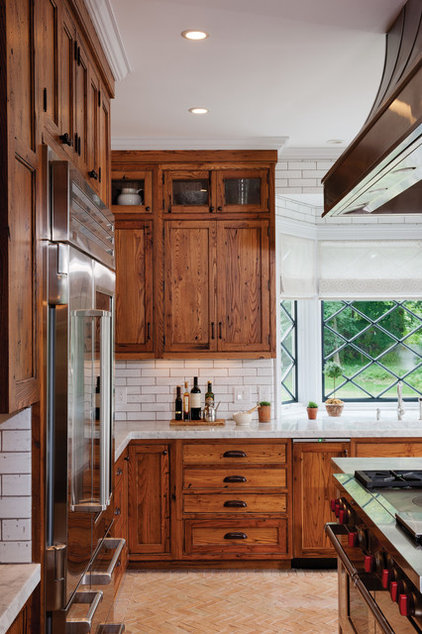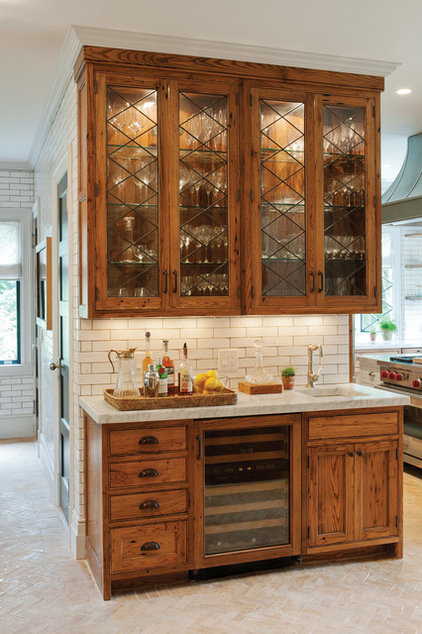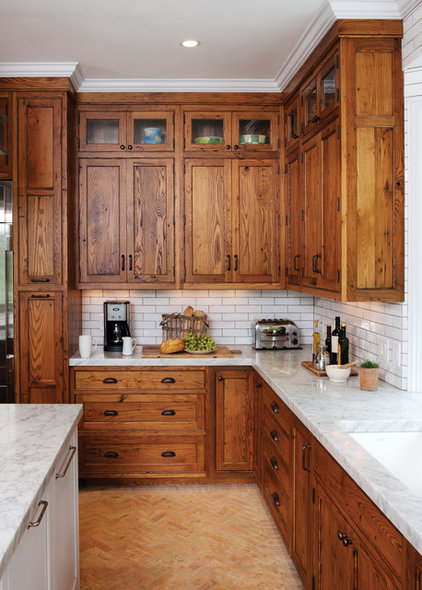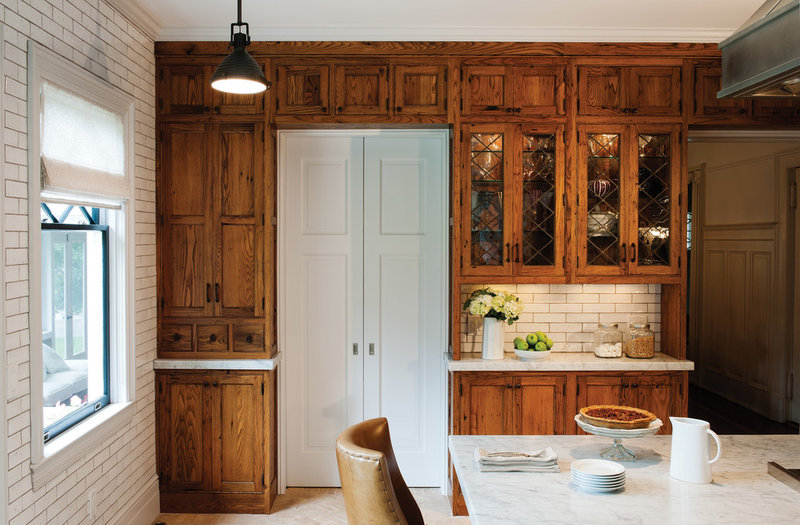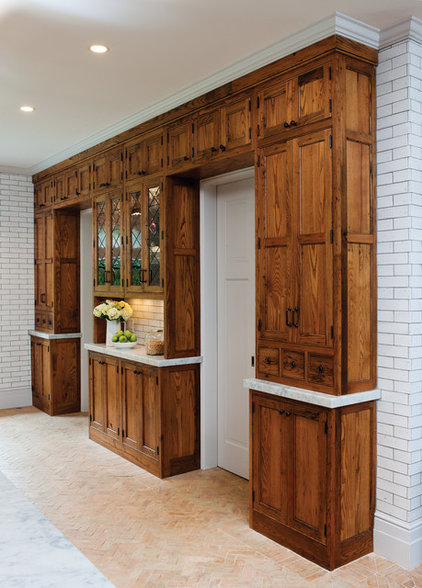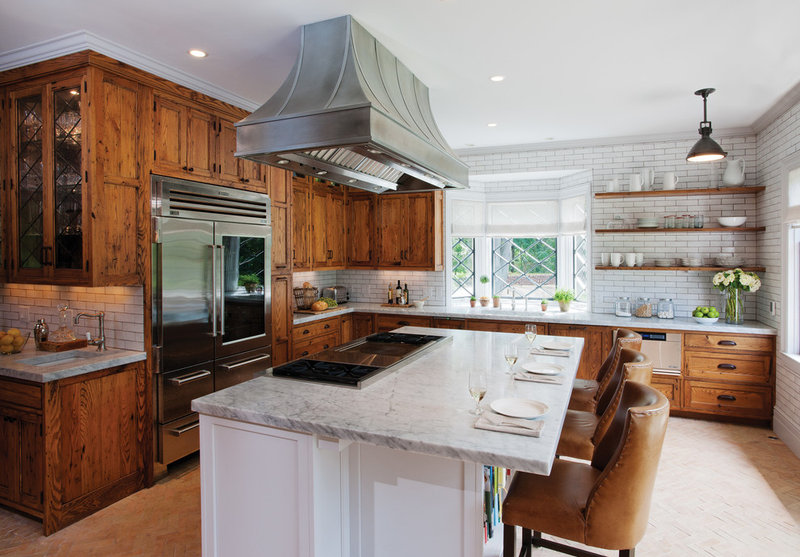American chestnut was once one of the most popular woods used in home construction in the United States, but the majestic tree has almost completely disappeared from the landscape. A blight that arrived around the beginning of the 20th century has all but eliminated the species. However, some resourceful builders are using this beautiful wood via reclamation. Chestnut boards recovered from a dilapidated barn in the South are currently thriving in this New England kitchen, lending an antique look to a room full of modern conveniences.
“The homeowner owns a travel business and travels to Africa extensively,” says Jeff Schneider, a designer at Crown Point Cabinetry. “She fell in love with the old-world look of kitchens over there, and loved every imperfection in the boards, like knot holes and mortise and tenon joint marks — these little details that show the history are her favorite parts.” Working in conjunction with the general contractors at Andy Miller Works, he crafted a one-of-a-kind kitchen.
Kitchen at a Glance Who lives here: A family of 5 Location: Greenwich, Connecticut Size: Main part of kitchen, 350 square feet; banquette area, 80 square feet
This is a true wood-burning pizza oven, with a stone chimney on the outside of the house. The owner is also an artist and loves to change out the art around the pizza oven for different seasons and events.
To get the old boards in shape for the new construction, they were X-rayed, and all the old metal objects such as nails were removed. Next, the cabinetmakers replaned the surfaces and edges, revealing fresh grains. After transforming them into cabinets, they finished them in a honey stain with a Van Dyke glaze.
Three floating shelves crafted from chestnut wood house everyday dishes. This open area balances out the other wood cabinetry and provides a light space between the windows.
The ceramic tile herringbone floors lend more old-world style.

